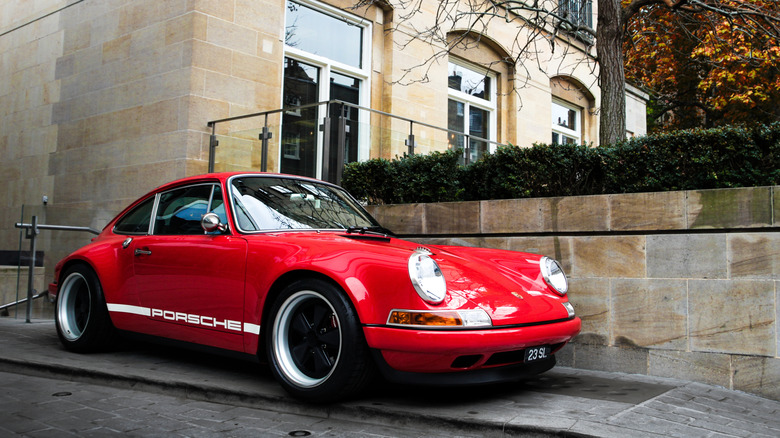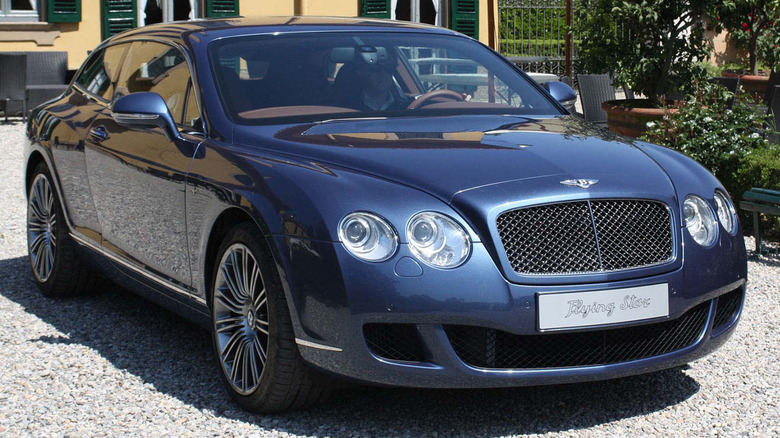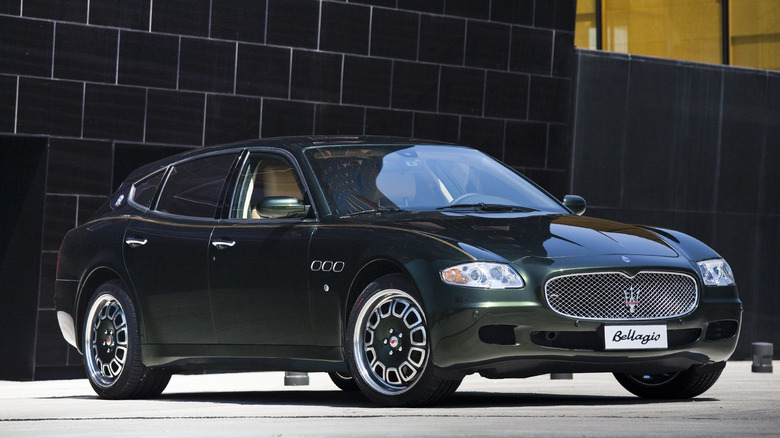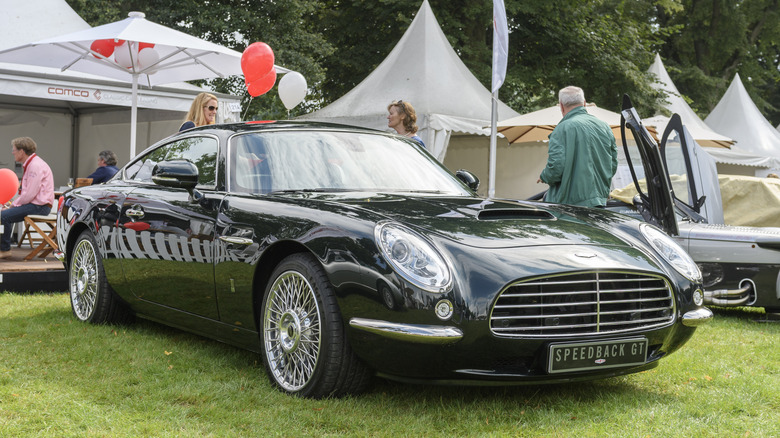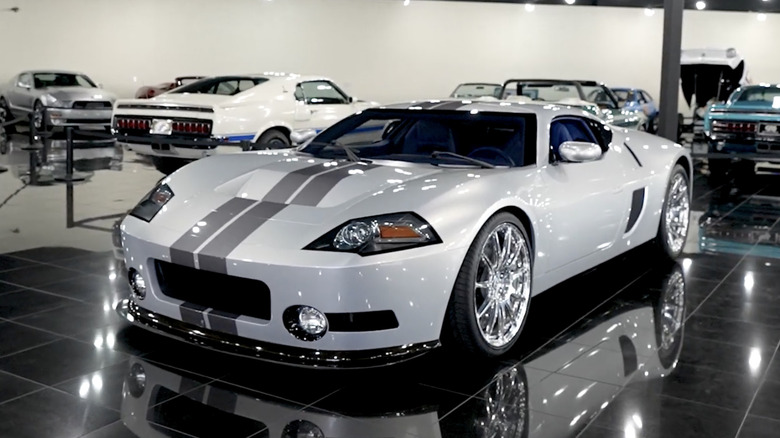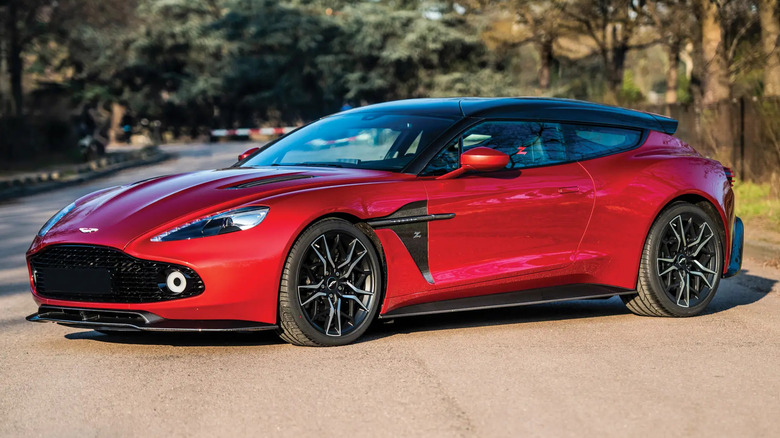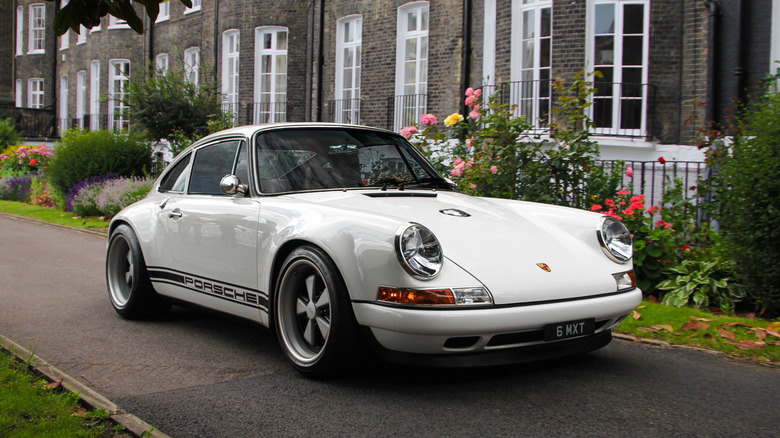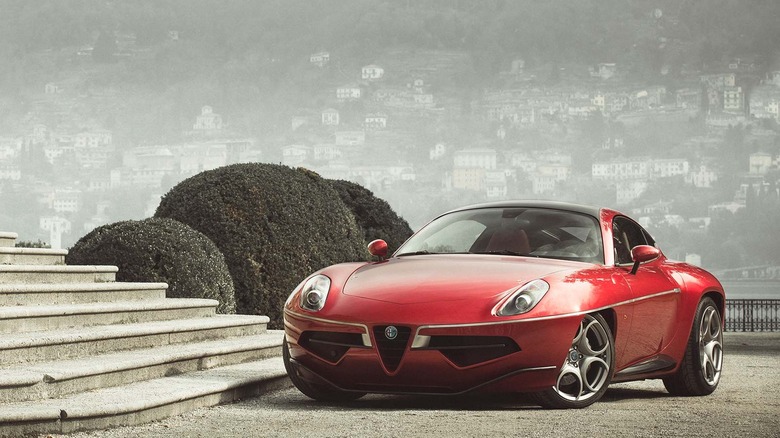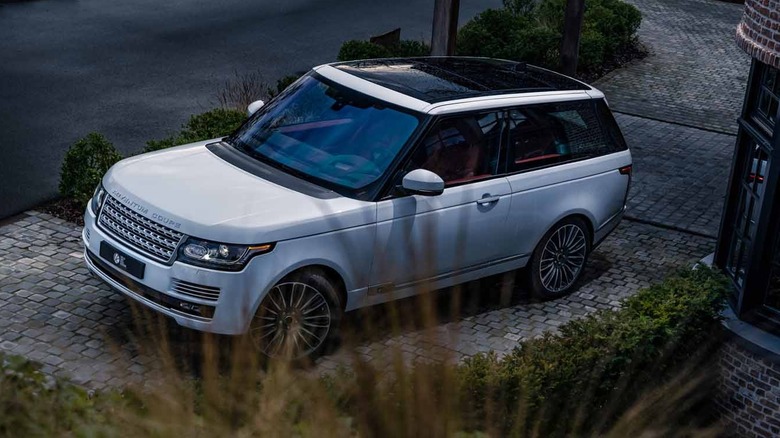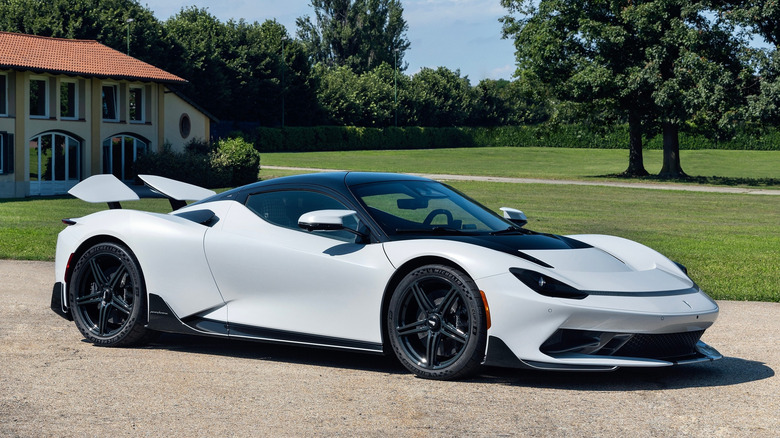9 Modern Coachbuilt Cars That Prove Bespoke Automotive Is Alive And Well
One of the coolest aspects of car production in past eras is the long forgotten process of coachbuilding. It used to be that many luxury automakers didn't sell cars with the bodywork. They sold the bare chassis and drivetrain, and then it was up to the buyer to choose a coachbuilder who would then build the body from scratch to the buyer's specification.
After the widespread adoption of assembly lines and measures to make the car production process cheaper and faster, automakers ultimately decided that they knew best when it came to the car's styling. Coachbuilding is no longer a very common practice, and even the luxury automakers who were known for it have resorted to other personalization options like paints and bespoke interior upholstery, with the occasional coachbuilt project here and there — though, notably Rolls-Royce reopened its coachbuilt department in 2021.
Other than that notable exception, there are also still few outfits all over the world keeping coachbuilding alive, resulting in some truly unique cars that will definitely stand out if you see them in the wild. That is, if you see them at all. Here are some of their most notable builds.
Bentley Continental Flying Star
One type of vehicle that just about every coachbuilder has been historically partial to is the shooting brake, the elusive two-door station wagon that everyone stopped offering from the factory. No, Mercedes doesn't count. Carrozeria Touring Superleggera, one of the oldest names in the business, gave the shooting brake treatment to the Bentley Continental GT. The resulting amalgamation received the name Flying Star.
At first glance, this just looks like an ordinary Continental GT of the time period — it just happens to be a longroof, that's all. The stock Continental's roofline has been completely altered, rear windows were added in, and the rear trunk became a hatchback.
Touring also went a step further by upholstering the cargo area in beautiful stitched leather. Not the best idea if you have a dog, as that wood would be completely decimated. The 6.0-liter twin-turbo W12 — a powertrain recently dropped from Bentley's new Continental GT — remained unchanged, and the interior looked the same, other than the bespoke upholstery. Only 19 of these were ever built, which makes it rarer than almost every limited edition supercar.
Maserati Quattroporte Bellagio Fastback
This is one that most people will likely recognize. The fifth generation Maserati Quattroporte is one of the most controversial luxury sedans of all time. On one hand, the Ferrari-sourced V8 and the chassis engineering are a joy, but on the other hand, the reliability concerns have meant hideous depreciation and a lack of trust from buyers.
Touring thought that practicality was a weak point in the Quattroporte, resulting in the Bellagio Fastback. This Quattroporte wagon was named after a stunning town in the Lombardy region of Italy, and by all counts, it's a proper station wagon. Most of the exterior was left untouched, aside from the retro alloy wheels that this coachbuilt wagon is known for. The most notable difference is, obviously, the handcrafted longroof.
Like the Flying Star, the Bellagio Fastback also gets rid of the pedestrian carpeting in the cargo area in favor of lacquered wood. Again, not very pet friendly. The 4.7-liter V8 under the hood was also left as is, meaning 450 hp and a top speed of almost 180 mph. You could also turn your Maserati wagon into a limo by adding storage for champagne bottles and flutes in the rear seats.
David Brown Automotive Speedback GT
For a lot of people, and especially for non-car enthusiasts, one of the biggest associations with the Aston Martin brand is the "James Bond" film franchise. Across over 20 movies, Bond has almost always chosen Aston Martins to drive, and his choice of the inline six-powered DB5 in 1964's "Goldfinger" is the main reason why that car is now in every movie car hall of fame.
As a lot of people have said, the DB5 wasn't actually all that good, despite its stunning on-screen grace (and machine guns). For those who want the DB5's look, but aren't ready to put up with its old British car antics, David Brown Automotive has your, erm, back with the Speedback GT. This is the same company that makes those hugely expensive restomod Minis.
The Speedback GT clearly takes styling inspiration from the original DB5, but it's also a lot more modern, with LED lights, a bit more length and width, and alloy wheels that are designed to look like wire wheels. The underpinnings are not from an old Aston Martin, but rather the Jaguar XK, which is a solid GT car in and of itself. Even though you can get early and even late model XKs for basically nothing, you better have a good amount of dough for this modern spy car.
Galpin Ford GTR1
The 2005 Ford GT was a brilliant supercar put together in a more old-fashioned way, with a fair bit of parts bin rummaging. The second-generation Ford GT became an all-out track monster — still with some parts bin rummaging, but altogether a lot more functional and serious. Notice how there was no supercar that plugged the gap between these two.
Famous Ford customizer Galpin decided to imagine what that missing inbetweener Ford GT might have looked like, and what we might have seen if Ford continued to evolve the original, like it did with the second gen. The Galpin Ford GTR1 was based on the original GT, but it was a completely different animal.
The GTR1 gained completely new bespoke exterior styling, which seems to be pretty heavily inspired by the incredible Shelby GR-1 concept of the mid 2000s. The same 5.4-liter V8 sat behind the passenger compartment, only it swapped out the supercharger for a couple of turbos for a total claimed output of 1,000 hp. Finally, the interior was largely unchanged, except it was upholstered in a copious amount of blue leather. This would have worked well as a Ford GT coachbuilding project with donor cars and the like, but sadly, Galpin never put the GTR1 into any sort of production.
Aston Martin Vanquish Zagato Shooting Brake
Aston Martin and Zagato's partnership is stronger than Owen Wilson and Wes Anderson's movie partnership. The two brands are very close, and every once in a while, they drop some absolute automotive bombshells. A simple but very effective idea: Aston underpinnings with incredible styling over the top. That was certainly the case with the Vanquish Zagato Shooting Brake.
The Vanquish Zagato SB was actually one of four end-of-the-line specials introduced just as the previous generation Vanquish was wrapping up with production. Obviously, this was the coolest one. Most of the unique styling traits were shared with the coupe and convertible, but the Shooting Brake got a longroof and a hatch, as well as a completely respectable cargo area.
Power came from, what else, Aston's 5.9-liter V12. By the end of the Vanquish's run, it made a punchy 580 hp, significantly more than the 450 that the DB9s and DB7s of yore were making. Only 99 of these coachbuilt Aston wagons were ever made, and that's a shame. The Zagato partnership has gone on for so long, that cars such as this Shooting Brake should become a mainstay of the lineup. We can only hope that the recently revealed new Aston Martin Vanquish will get some sort of Zagato special as well.
Singer Porsche 911
You didn't think we'd leave out everyone's 911 love letter project, did you? So many companies nowadays have picked up the laborious task of reinventing and re-engineering the classic Porsche 911, each with their own interpretation. However, California-based Singer Vehicle Design is, in some way, ground zero, and it's the first one most of us ever found out about thanks to the likes of Chris Harris and "Top Gear."
Singer captures what everyone loves about the old school air-cooled 911s, but gives it just the right amount of modernization and new features — carbon fiber body panels, more powerful engines, active aero, and exteriors and interiors that exert some pretty intense reactions from Porsche enthusiasts. You'll probably have to take out a second mortgage for both the donor car and the Singer conversion, but it's absolutely worth it.
The company has also begun expanding its horizons, like the Singer DLS study, and the incredible 934/5-inspired DLS Turbo study. Companies like Singer make people fall in love with classic cars all over again. It has been modernizing classic Porsches for over a decade, and become a huge part of Porsche culture in the process. We salute it for that.
Alfa Romeo Disco Volante
Back in the 1950s, when Alfa Romeo was one of the top dogs in the Formula 1 world championship, it was conducting tests on a brand new lightweight race car it called the Disco Volante. Disco volante is Italian for flying saucer, and in a lot of ways, the original lived up to its name.
While that Disco Volante wasn't street-legal, the modern day Disco Volante concept, also the work of Carrozeria Touring, is a proper road car. The styling was definitely controversial, as it takes heavy influence from the original Disco Volante's odd shapes and styling details. With time, however, the Disco Volante's uniqueness began to stand out. As Touring claims, the aluminum body work takes 1,550 man hours to handcraft.
Underneath all the incredible hand-built bodywork and the Ferrari 599 headlights was the chassis and drivetrain from the ill-fated Alfa Romeo 8C Competizione. It used the same Maserati/Ferrari 4.7-liter V8, though it was tuned more for cruising and it had a much subtler engine note. The 444 hp output and six-speed automated manual transaxle remained the same, however, as did the limited slip differential at the rear. The modern Disco Volante also prides itself in being one of only a handful of cars that have completely stolen Jeremy Clarkson's heart.
Range Rover Adventum Coupe
A few years after the launch of the L405 Range Rover back in 2012, Land Rover's Special Vehicle division promised a limited production coupe version inspired by the 1970 original at some point in 2019. There was even a concept, but sadly, the project was never greenlit, with only the five-door regular Rover prevailing.
Where Land Rover dropped the ball, Dutch coachbuilder Niels van Roij Design took it upon itself to pick it up. In early 2020, Niels van Roij Design showed the world the Adventum Coupe, its own take on the coachbuilt two-door Range Rover. The conversion appears expertly done — it's a seemingly ordinary L405 Range Rover with the rear doors chopped off, and the rest of the bodywork adjusted to fit.
The company behind this project also gave us the Tesla Model S wagon, as well as the Ferrari Breadvan homage based on the 550 Maranello. In theory, you could use any L405 Range Rover as a starting point, and the company promises endless customization options to make your Adventum Coupe truly one of a kind. Even though the Adventum Coupe is still featured on Niels van Roij's website, we have yet to see an actual one in the wild.
Pininfarina Battista
Admittedly, this one is cheating slightly. While Pininfarina is, by all means, an Italian design house, Automobili Pininfarina is a separate division specifically tasked with cars and car manufacturing. The Battista is presently the only car that the company offers, and what a thing it is.
What makes the Battista coachbuilt — you know, other than the extremely high price tag and the fact that it's an ultra-limited production electric hypercar — is that under the unique bodywork, it uses the same powertrain technology as the Rimac Nevera. In other words, Pininfarina starts with the Nevera's base, and then grafts a completely unique body on top of it. In a way, that makes it coachbuilt — there's no donor car, but rather the chassis and drivetrain are sent straight to Pininfarina to receive the Battista bodywork. Its connection with the Italian design house makes it a nice little tie-in.
There's also the small fact that the Battista also has 1,899 hp, courtesy of four individual electric motors and a massive 120 kWh battery pack. Pininfarina claims it can reach 60 mph in less than 2 seconds, which is very similar to what the Nevera can achieve. No slouch, then.
